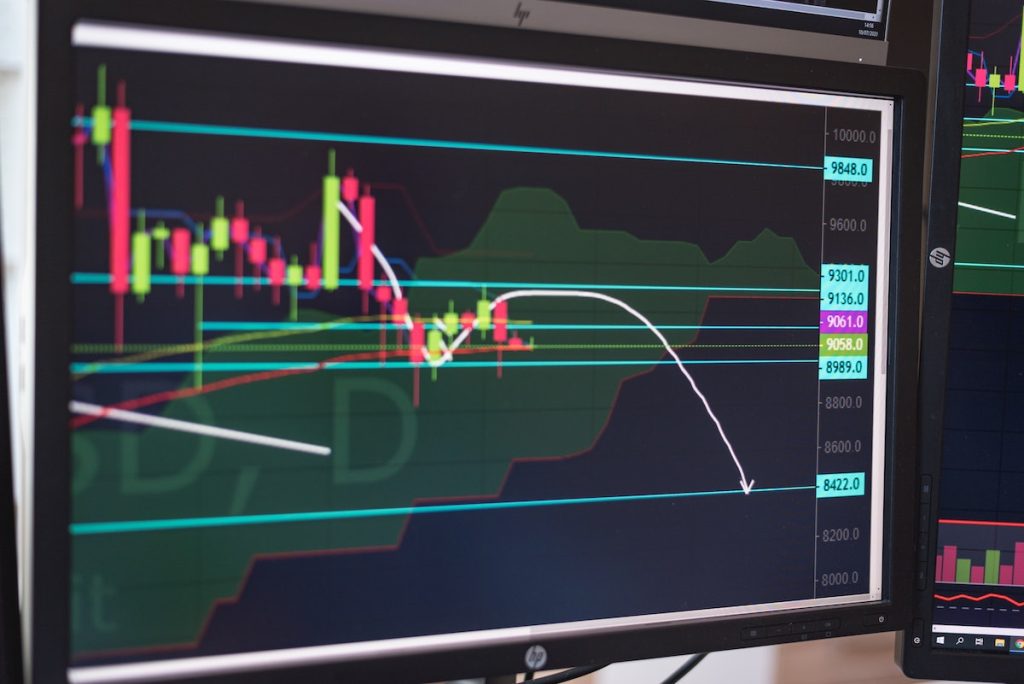Sell in May? Certainly, they did, but according to the old stock market adage, traders did not flee the market but instead returned to aggressively purchase the drop, leading to some of the wildest monthly swings in recent memory.
Aggressive central banks, inflation, and China’s lockdown measures all contributed to widespread selling across asset classes in the first half of the month. However, after that, market participants began lowering their forecasts for future U.S. interest rate increases.
As of Tuesday, oil had risen beyond $123 a barrel, and figures from the Euro Zone showed record inflation of 8.1% in May, bringing concerns about price increases back to the forefront of the public consciousness.
According to Stuart Cole, chief macro strategist at Equiti Capital, “there will be a considerable degree of pessimism in the market that we have seen the bottom yet.”
A review of the performance of many key asset types throughout the last month follows.

1. THE MONEY MARKETS
The yield on the 10-year U.S. Treasury note finished the month of May close to where it began, although it had previously risen to a 3-1/2 year high over 3.2%, fallen to a 6-week low, and then risen again on the final day of the month.
These shifts are in line with the ebb and flow of market expectations for a Federal Reserve rate rise, which at the beginning of May suggested that interest rates in the United States would eventually peak over 3.3%.
Futures dropped below 3% on growth worries and dismal economic data, but a rebound in oil prices and hawkish remarks from Fed governor Christopher Waller sent them soaring again.
Francois Savary, chief executive officer of asset management Prime Partners, has predicted that “volatility will continue to feed” because to the lack of transparency around interest rates and the economy. The question of “where the terminal rate is” persists as the central one.
The value of wagers on the European Central Bank rose. As policymakers have signaled an exit from negative rates by September, investors are pricing in some 175 basis points (bps) of rate hikes for the coming year, up from 123 bps at the beginning of May.
betting on the cooling process
2. V-SHAPED STOCK MARKET ACTIVITY DURING THE MONTH OF MAY
As of May 9 (from its high earlier in the month), the MSCI global stocks benchmark (.MIWD00000PUS) had lost about $5 trillion in value. This was the lowest point in the index in around 18 months.
The index has gained 8% since then as the market has reversed its most bullish Fed tightening forecasts. Therefore, the MSCI World index is expected to finish May with a little rise, with a market capitalization once again above $60 trillion.
Meanwhile, U.S. technology stocks, which are especially sensitive to changes in interest rates, fell by 15% in the first 20 trading days of the month before recovering by 12%.
According to Goldman Sachs, “further clarity on how fast inflation decelerates from here, how monetary policy reacts, and the implications for the growth outlook” are crucial for a long-term recovery.
The risk premiums required by investors for junk-rated U.S. corporate bonds also experienced significant fluctuations, reaching as high as 494 basis points (bps) from 405 at the beginning of May. The rate has been restored to 419 bps. (.MERH0A0)
snapshot
3. THE EURODOLLAR DANCE
The euro rebounded by as much as 4% from five-year lows reached earlier this month as the European Central Bank (ECB) made a hawkish policy shift.
While the U.S. dollar index has fallen from two-decade highs on expectations that negative interest rates in the euro zone would soon be eliminated, investors are still hesitant to declare “peak dollar” since the Federal Reserve shows no indications of pausing its policy tightening drive.
The possibility of another economic downturn is looming over the euro as the European Union gets ready to reduce its oil imports from Russia.
Dollar king
4. CRYPTOCURRENCY CRASH, QUADRUPLE ZERO, AND OTHERS
In the middle of May, TerraUSD, a stablecoin that had been pegged at 1:1 to the dollar, suddenly collapsed, sending prices tumbling.
However, they have not seen a meaningful recovery like the stock market.
Three days after the TerraUSD peg started to crack, on May 12, bitcoin hit $25,401, its lowest price since December 2020. The largest coin by market capitalization lost 20% of its value this month, its largest monthly loss in a year. . The market worth of all cryptocurrencies had fallen to $1.14 trillion at the time TerraUSD crashed, according to CoinMarketCap. The current value of the market is $1.3 trillion, down by almost 25% this month and 56% from its all-time high of about $3 trillion in November.
Blockchain analytics company Elliptic believes that holders of TerraUSD and its related token, luna, lost roughly $42 billion. keep reading
snapshot
5. THE DROP IN OIL PRICES
There was none of the yo-yoing seen in other asset classes this month on oil markets. The price of Brent oil futures, meanwhile, has risen for six months in a row, the longest such increase in a decade and a source of further stress for authorities trying to reign in inflation.
As EU leaders agreed to reduce oil imports from Russia by year’s end, the price of Brent rose to almost $124 per barrel on Tuesday, the highest since March 9. keep reading
Chinese authorities have lifted restrictions on travel and transportation in Shanghai due to the COVID-19 virus outbreak, providing more support to the market on Tuesday. This comes at a time when demand is already rising in the Northern Hemisphere as summer temperatures rise to welcome the vacation season, further increasing global energy consumption.













